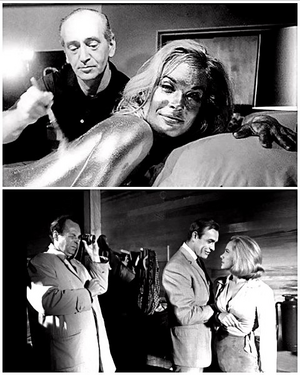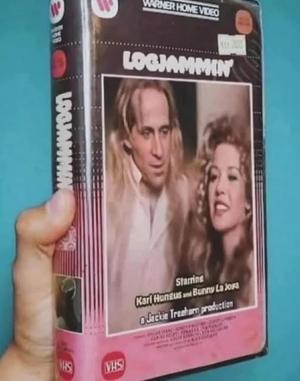
Goldfinger (1964)" is widely regarded as the definitive James Bond movie, setting the standard for the franchise’s blend of espionage, charm, and spectacle. Directed by Guy Hamilton and produced by Albert R. Broccoli and Harry Saltzman, this cinematic masterpiece was adapted from Ian Fleming's 1959 novel. Its production, however, was an ambitious and occasionally tumultuous journey that shaped the film into the enduring classic it is today.
The meticulous planning for "Goldfinger" began even before the release of "From Russia with Love" (1963). The filmmakers were determined to elevate the third Bond film to new heights. Harry Saltzman, co-producer, once remarked in an interview, “We knew we had something special with Bond, but we didn’t want to repeat ourselves. The idea was to make something bigger, grander, and with more flair than ever before this wasn’t just a film; it was an event.” With a budget of $3 million, a significant increase from its predecessors, the stakes were higher, and the expectations immense.
The production team worked tirelessly to create an unforgettable villain in Auric Goldfinger, portrayed by Gert Fröbe. Casting Fröbe was a bold move, as he spoke little English, requiring his lines to be dubbed by actor Michael Collins. This decision could have backfired, but it added an iconic quality to Goldfinger’s character. Director Guy Hamilton explained, “Fröbe had this imposing presence that made him perfect for the role. Even if his English wasn’t up to par, his expressions and physicality spoke volumes. We wanted a villain who could stand toe-to-toe with Bond, and he delivered that effortlessly.”
One of the most iconic elements of "Goldfinger" is the Aston Martin DB5, often referred to as the most famous car in cinematic history. The vehicle, outfitted with gadgets like an ejector seat and machine guns, became an instant sensation. Ken Adam, the production designer, recalled the excitement surrounding its inclusion: “Designing the DB5 was a dream. We had to think creatively to make it both functional and fantastical. The car wasn’t just transportation it was Bond’s silent partner, a gadget-packed extension of his ingenuity. When we first showed it on set, the cast and crew were just as awestruck as we hoped audiences would be.”
The film’s locations added to its grandeur. From Miami to the Swiss Alps, the team spared no expense in capturing stunning visuals. Filming the golf match between Bond and Goldfinger at Stoke Poges Golf Club in England was particularly memorable. Sean Connery, who portrayed Bond, was a novice golfer, but the sequence required him to appear skilled. The director recalled, “Sean took lessons and practiced endlessly to make it believable. He was a perfectionist, and that dedication shows in every frame of the scene.”
Perhaps the most challenging sequence to film was the climactic raid on Fort Knox. While the production team was denied access to the actual facility for security reasons, Ken Adam constructed an elaborate and detailed replica of the interior, based entirely on speculation. “The Fort Knox set was a gamble,” Adam admitted. “We had no idea what it looked like inside, but we imagined it as this grand, imposing space with gold bars stacked high. The result was pure imagination, and it resonated with viewers because it felt as secretive and grand as they expected.”
One of the film’s most iconic lines, “No, Mr. Bond, I expect you to die,” exemplifies the script's wit and tension. The line became an emblem of the Bond franchise’s unique tone. Richard Maibaum and Paul Dehn’s screenplay balanced humor, suspense, and drama, cementing the formula that would define subsequent Bond films. Hamilton noted, “Bond isn’t just a spy he’s a symbol of sophistication and resilience. The dialogue had to reflect that, blending sharp wit with a sense of danger.”
"Goldfinger" also revolutionized Bond’s use of gadgets, with Q Branch becoming a more prominent aspect of the narrative. Desmond Llewelyn, who played Q, once shared his thoughts on the growing popularity of his character: “Audiences loved the gadgets. They added a sense of wonder and innovation. My scenes with Sean were always delightful because there was this unspoken humor in our dynamic. He was the cool agent, and I was the grumpy technician it just worked.”
Shirley Bassey’s unforgettable title track, composed by John Barry with lyrics by Leslie Bricusse and Anthony Newley, added another layer of grandeur to the film. Bassey’s powerful voice and the song’s dramatic orchestration perfectly captured the film’s essence. Barry explained, “The theme song needed to be bold, seductive, and larger-than-life just like Bond. Shirley brought all of that and more. Her voice was electrifying, and we knew from the first recording that we had something extraordinary.”
Released in 1964, "Goldfinger" became a cultural phenomenon, earning critical acclaim and grossing over $125 million worldwide. It solidified Sean Connery’s status as a global star and established James Bond as a cinematic icon. Reflecting on the film’s legacy, Broccoli once said, “’Goldfinger’ was a turning point. It wasn’t just about making a great Bond film; it was about defining what Bond represents a blend of sophistication, danger, and unshakable confidence.”
The success of "Goldfinger" set the bar for every Bond film that followed, making it a cornerstone of the franchise and a masterpiece of 20th-century cinema.







